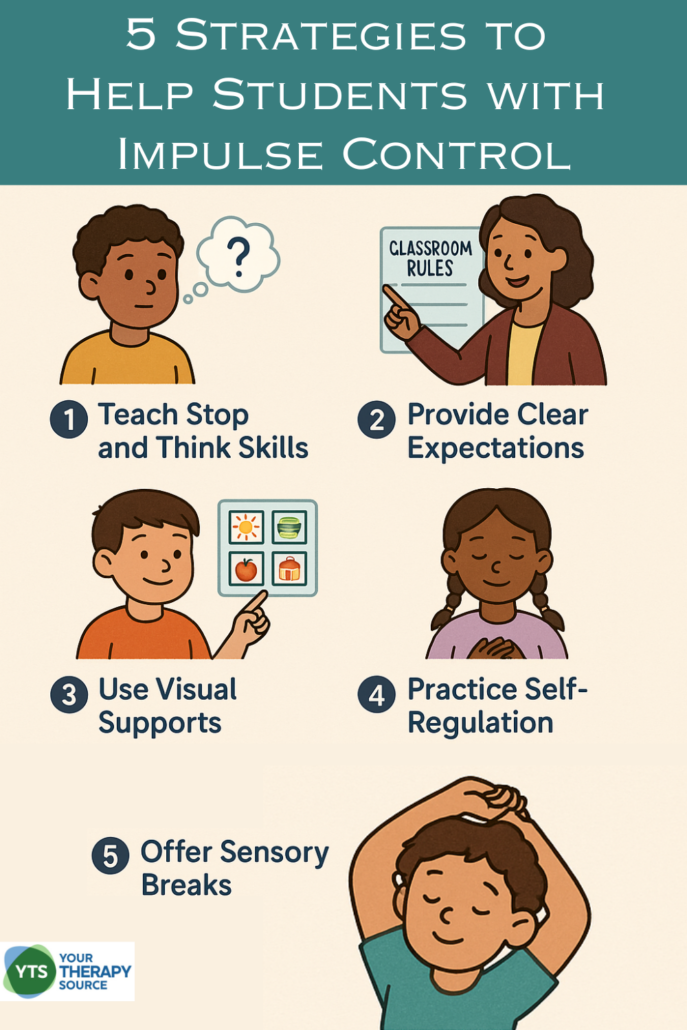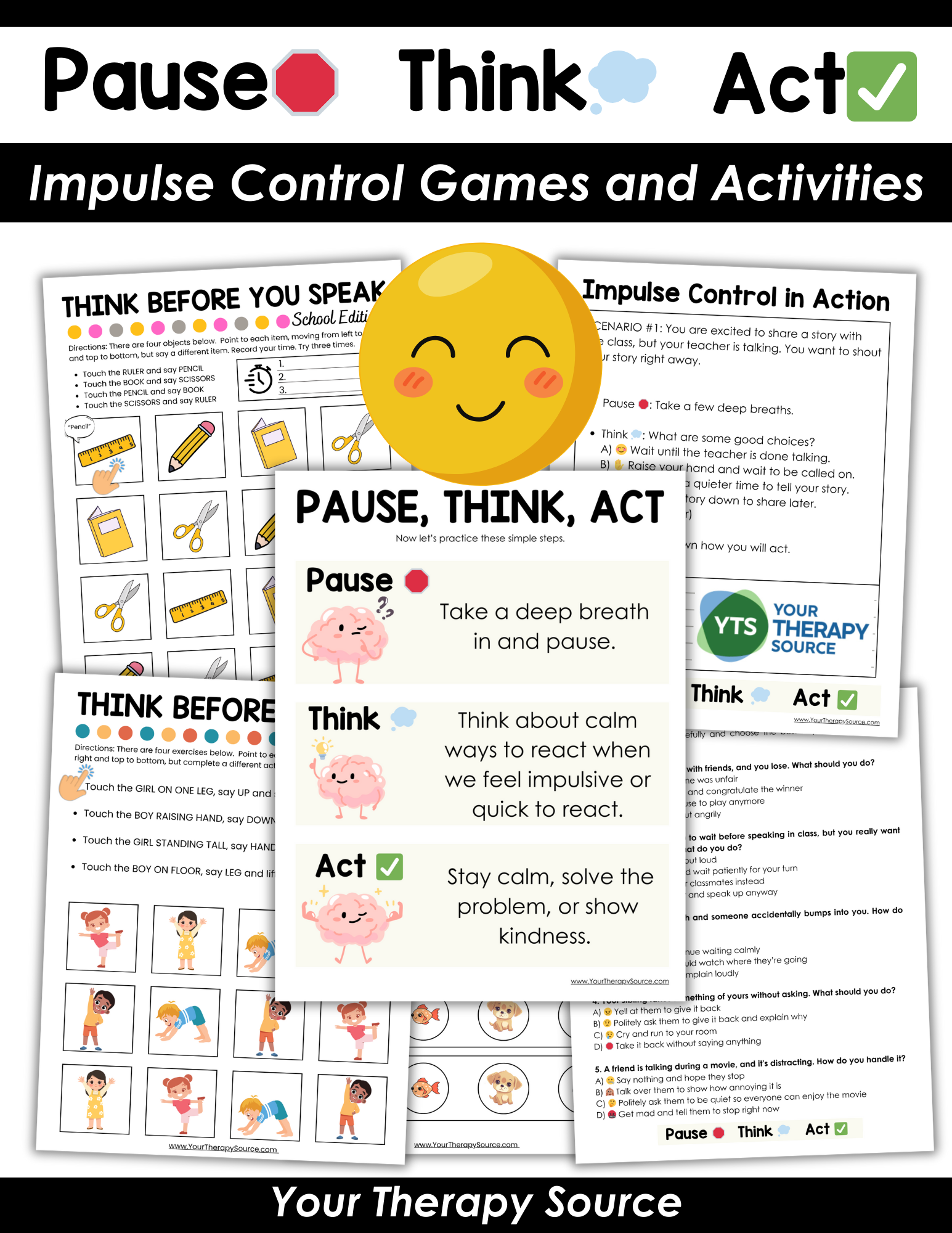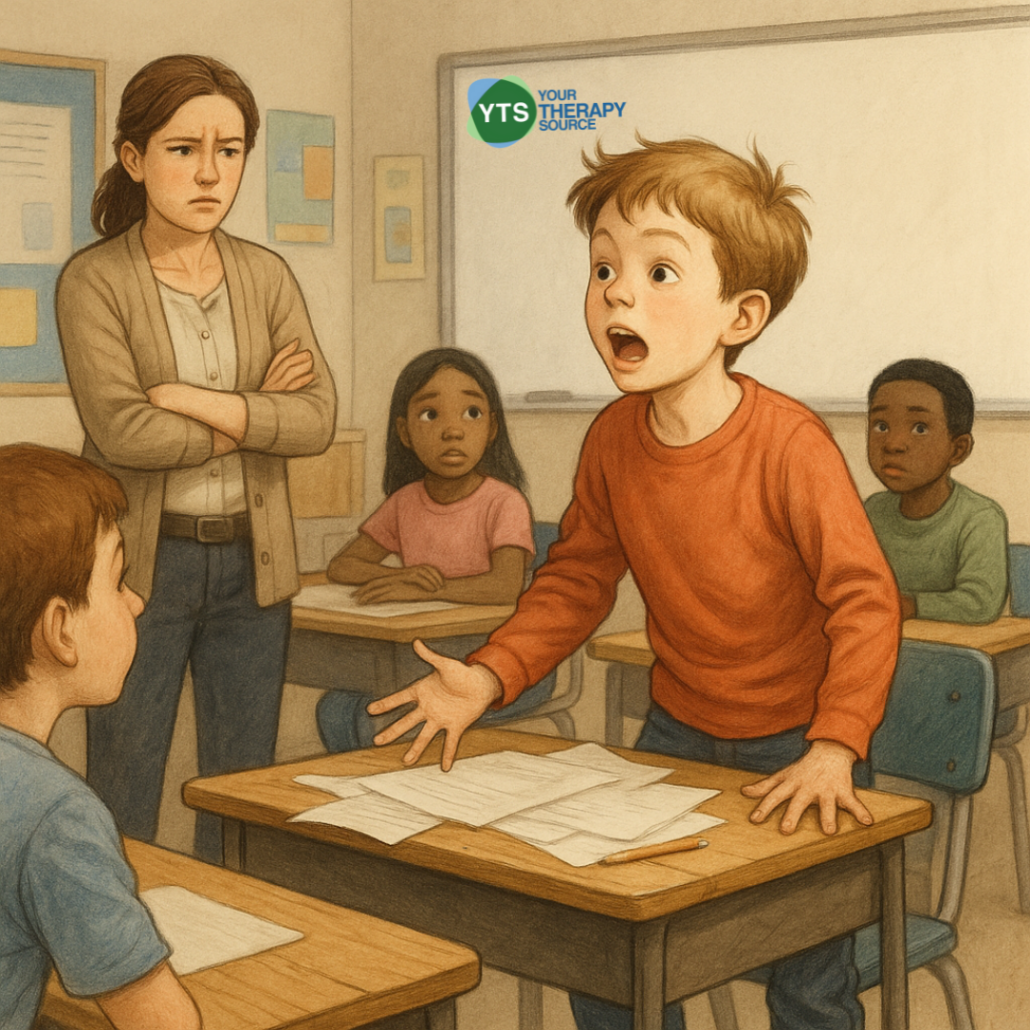Poor Impulse Control in Kids: 10 Strategies That Work at School and Home
Poor impulse control in children can show up in many ways, blurting out answers, interrupting, grabbing things, or acting out without thinking. While it’s easy to label these behaviors as defiant or disruptive, the truth is that impulse control is a skill that many children are still developing. For some, especially those with ADHD, sensory differences, or emotional regulation challenges, it takes longer and requires intentional support.
Rather than using punishment to manage poor impulse control, the goal is to teach children how to pause, reflect, and make more thoughtful choices. The following strategies are practical, research-informed tools that caregivers and educators can start using today.

What’s the Difference Between Impulse Control and Self-Regulation?
Understanding the difference between impulse control and general self-regulation can help. Self-regulation includes managing emotions, attention, energy, and behavior to meet expectations. Impulse control is one specific part of that broader skill set. It’s the ability to pause before reacting. And like any skill, it can be taught, practiced, and strengthened with guidance.

Impulse Control Workbook – Pause, Think, Act
Why Do Some Children Struggle with Impulse Control?
Impulse control develops in the brain’s prefrontal cortex, which continues maturing into early adulthood. In children, especially those with ADHD or executive function challenges, this area may develop more slowly. Poor impulse control isn’t a choice. It’s often a delay in skill development. Kids who struggle with impulse control need calm, consistent support, not punishment or shame.
Other contributing factors to poor impulse control include:
- Sensory processing difficulties
- High levels of stress or anxiety
- Inconsistent routines
- Lack of co-regulation support from adults
- Underdeveloped executive function skills
10 Effective Strategies to Help When Students Have Poor Impulse Control
- Provide visual reminders and tools – Visual checklists, cue cards, and posters keep strategies top of mind.
- Teach and repeat the “Stop, Think, Act” routine – Use visuals, modeling, and verbal prompts to reinforce this simple decision-making sequence. Practice it regularly so it becomes automatic in moments of stress or excitement. Try this free printable and song: Stop, Think, Act
- Play games that require self-control – Games like Simon Says, Red Light Green Light, or Freeze Dance help children practice stopping, waiting, and thinking before acting, all key elements of impulse control. Try using free resources like these: Impulse Control Worksheets
- Model your own self-regulation – Let kids hear how you manage your emotions: “I’m getting frustrated, so I’m going to take a deep breath before I speak.” This kind of modeling builds self-awareness and emotional control.
- Create a calm space to regroup – Set up a calm-down corner or quiet area with sensory tools, fidgets, posters, or timers. This gives kids a structured way to take a break and regain control without feeling punished.
- Stick to consistent routines and preview transitions – Predictability helps kids stay regulated. Use visual schedules or verbal cues like “In five minutes, we’re going to clean up” to ease transitions and reduce impulsive reactions.
- Co-regulate before correcting behavior – If a child is dysregulated, they won’t be able to listen or learn. Use a calm voice, offer connection, and support them in calming down before addressing what went wrong.
- Use songs to reinforce skills in a multisensory way – The Self-Control Song was created to teach impulse control through music, visuals, and movement. It helps children internalize the Stop, Think, Act routine in a fun and memorable way. Use it during group lessons, transitions, or morning meetings: Self-Control Song
- Collaborate on problem-solving – After the moment has passed, revisit the situation with curiosity. Ask “What was hard about that?” or “What can we try next time?” This approach builds insight and supports lasting behavior change.
- Name and praise specific self-control efforts – Be specific when you recognize good choices: “I saw you wait your turn even though you were excited. That took self-control.”
Listen to the Podcast
Want to Learn More?
These strategies are grounded in research and practices developed by leading child development experts, including:
- Dr. Ross Greene – Collaborative & Proactive Solutions model for solving behavioral challenges with kids
- Dr. Russell Barkley – Expert in ADHD and executive function, focusing on impulse control as a neurological delay
- Dr. Mona Delahooke – Advocates for understanding behavior through the lens of nervous system regulation
- Dr. Lori Desautels – Emphasizes brain-aligned, co-regulation-based approaches to classroom behavior
- Angela Hanscom, OTR/L – Highlights the importance of movement and sensory input in child development
- Peg Dawson, Ed.D. – Co-developer of practical tools to strengthen executive skills in children
These experts offer valuable insight into why kids act before thinking—and how we can help them develop stronger impulse control through guidance, structure, and compassion. Explore more strategies and free resources to support impulse control and self-regulation at Your Therapy Source.



